Both the city’s recent bloody past and its stunning ancient and French colonial architecture have made the Cambodian capital a tourist magnet. Phnom Penh was dubbed the “Paris of the East” before the conflict that broke out in the 1970s, and its picturesque white buildings and ancient temples (wats) earned it this nickname. Although the Khmer Rouge dictatorship has been down for quite some time, Phnom Penh is just now beginning to lose its harsh edges. One of its main draws is that, unlike some of its neighbors, it has not been Westernized to the same extent, so visitors may get a more authentic taste of Southeast Asia. What follows is a rundown of the city’s most popular sights:
10. Wat Ounalom
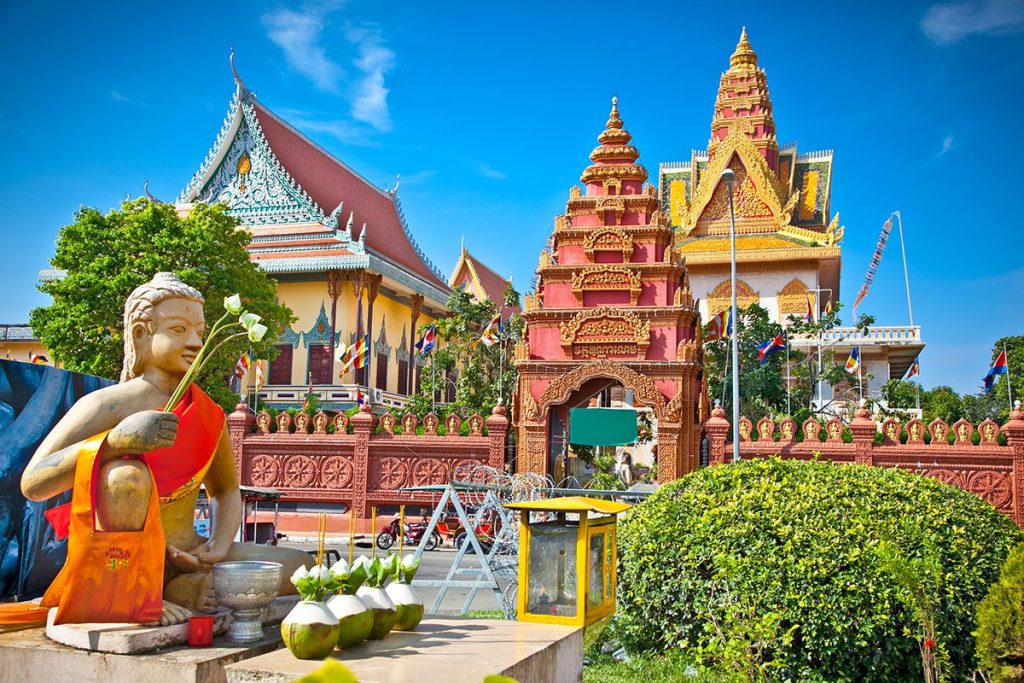
Discover the serenity and spiritual essence of Wat Ounalom Pagoda in Phnom Penh. Image source: Aleksandar Todorovic/Shutterstock.com
More than forty structures make up what is essentially the Buddhist capital of the country. There is a lot of enjoyment to be had in discovering the history and architecture of these beautiful pagodas and relic-filled stupas, which date back to 1443. It’s where the most senior monk in Cambodia’s Buddhist order lives, together with many of his orange-robed brothers. Greater accessibility allows for the discovery of hidden gems such as beautiful Mekong River vistas and little-known pieces of art. Despite being vandalized by the Khmer Rouge, most of the temple’s sculpture has been rebuilt and is still visited by devotees on religious tours. The stupa with the eyebrow hair of the Buddha and the inscription in Pali, an ancient language, is particularly noteworthy.
9. Independence Monument
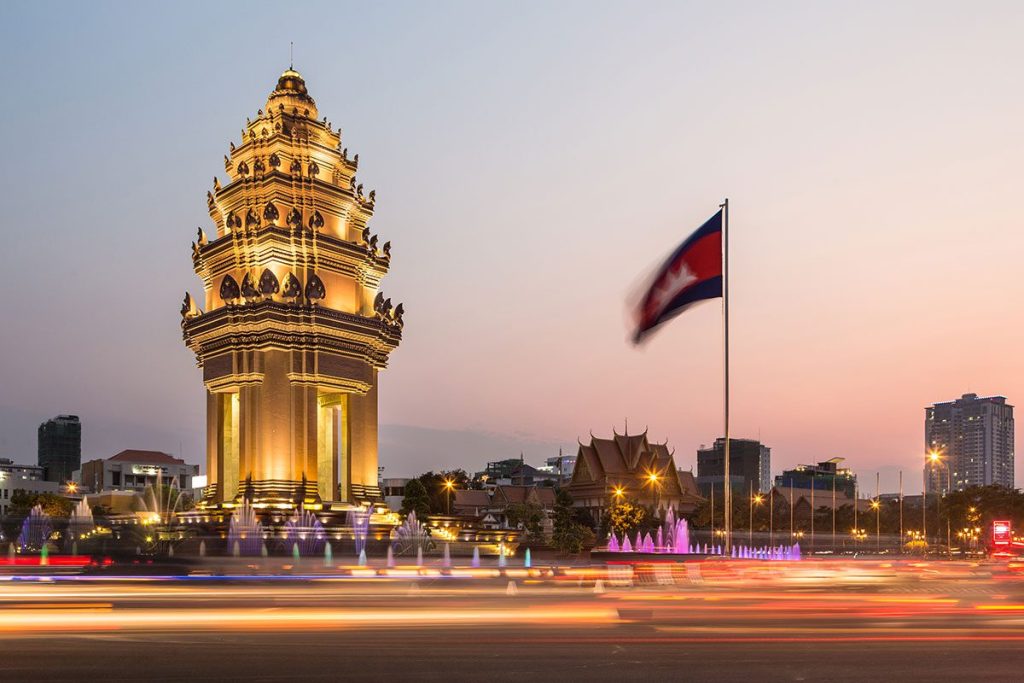
Witness the majestic beauty of the Independence Monument in Phnom Penh. Image source: AsiaTravel/Shutterstock.com
This tower was built in 1958 to mark the fifth anniversary of Cambodia’s independence from French colonial rule. It is a representation of a lotus-shaped stupa dedicated to Cambodia’s war dead, and it was designed to resemble the central tower of Angkor Wat, the country’s most famous ancient temple. The park in which the monument is located also has many other significant statues commemorating war heroes and peace agreements with neighboring countries like Vietnam. Festivalgoers go there to celebrate national holidays, decorate the area with flowers, and enjoy concerts, outdoor martial arts sessions, and other park activities.
8. Russian Market
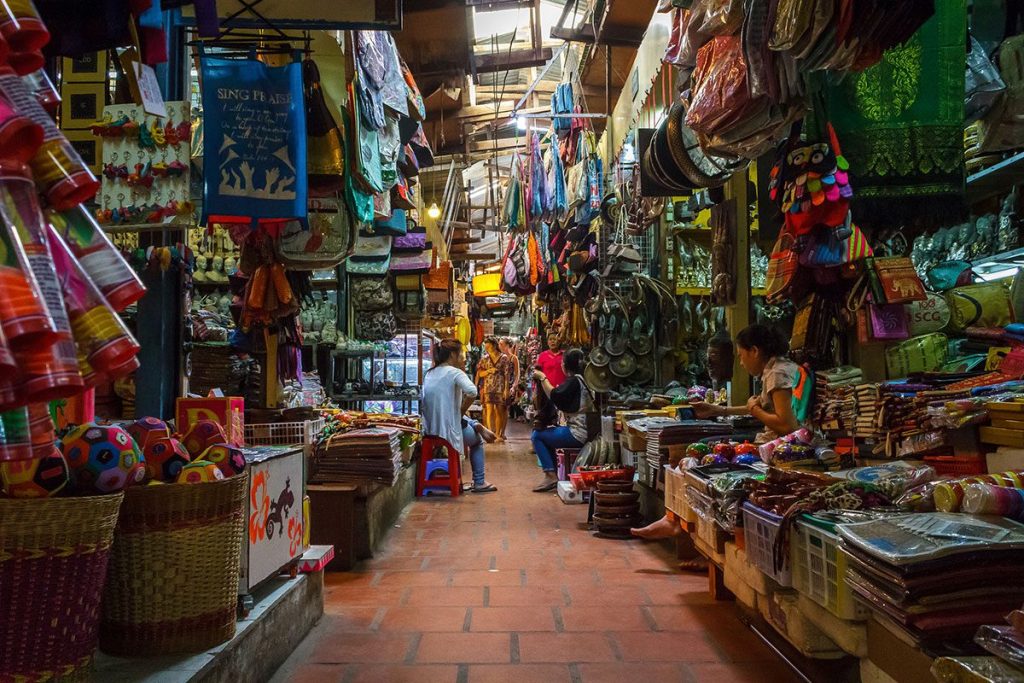
Explore the vibrant atmosphere of the bustling Russian Market in Phnom Penh. Image source: Jeff Cagle/Shutterstock.com
The French were the most well-known foreign occupiers of Phnom Penh, but the city also has a sizeable Russian population that arrived during the cold war period in the 1980s. In the Russian market, you may get numerous cheap (but sometimes fake) designer products for a tenth of the US price. Jewelry, silk and other materials, woodcarvings, musical instruments, and much more are among its outstanding handicrafts. This is a good spot to practice your haggling skills since the first offer is usually far lower than the asking price.
7. National Museum of Cambodia
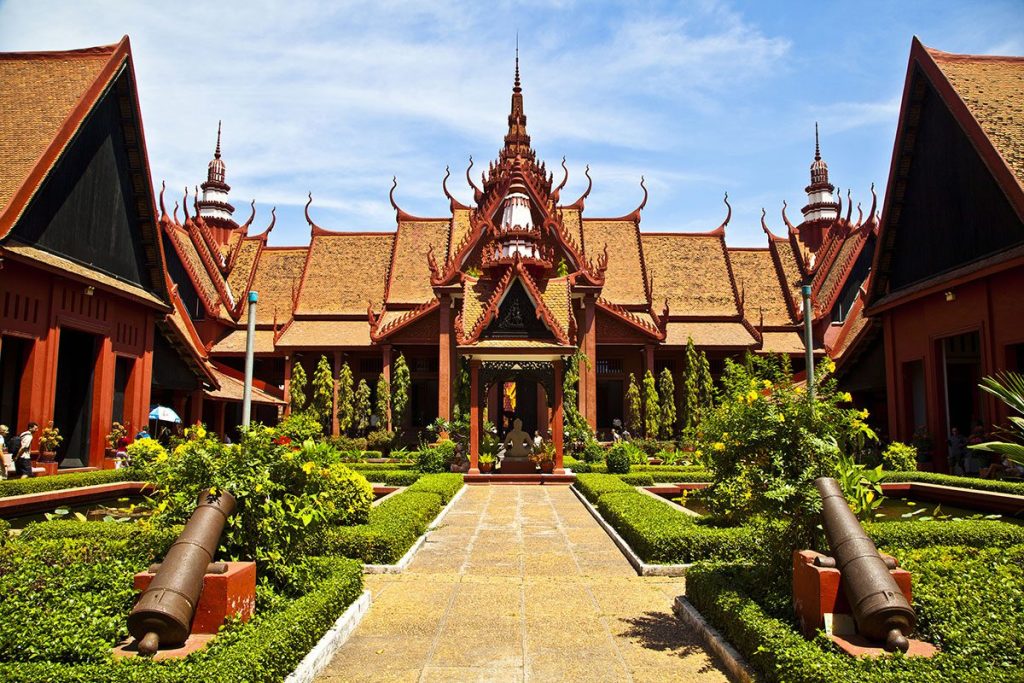
Admire the exquisite symmetrical beauty of Khmer architecture at the National Museum. Image source: Marcel Toung/Shutterstock.com
When it comes to Cambodian history and culture, no other institution compares to the National Museum of Cambodia. Spectacular, lush gardens and a vivid terracotta pavilion with four wings and a wealth of hidden treasure await guests before they ever get inside the structure. The Khmer, the most populous ethnic group in Cambodia, are highlighted through a special exhibition of their artistic achievements. Notable Buddhist and Hindu statues are also on display there.
6. Choeung Ek Genocidal Center
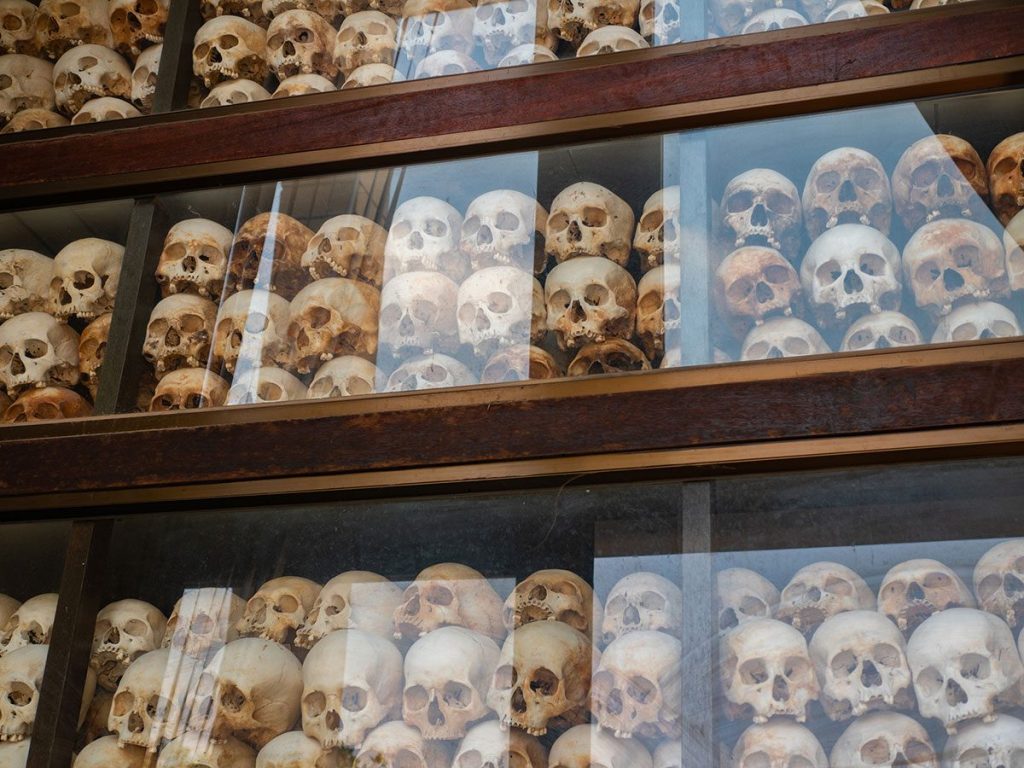
Pay homage to the victims and honor the resilience at Cheung Ek Killing Field Genocide Center. Image source: Hyserb/Shutterstock.com
The most well-known of Cambodia’s several killing fields commemorates those who perished at the hands of the Khmer Rouge. 9,000 individuals in this field and a million people throughout the country were brutally murdered between 1975 and 1979, and the site has been turned into a Buddhist Stupa, or spire-peaked monument of relics. Inside the structure is a large acrylic glass display containing over 5,000 of the skulls found here; it is not a sight for the faint of heart.
5. Wat Phnom
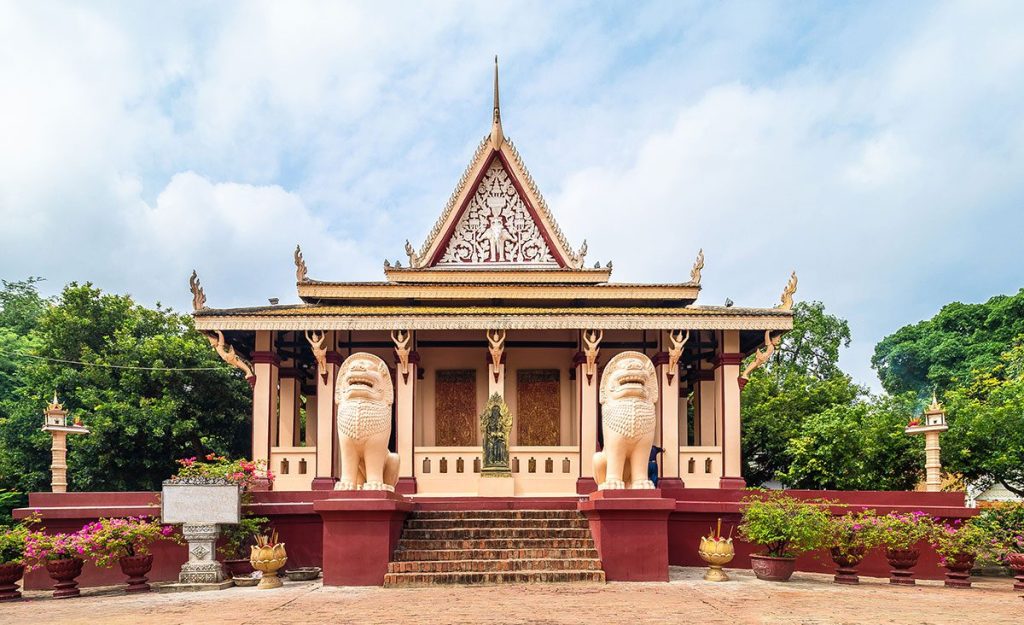
Discover tranquility and spirituality at Wat Phnom Hill Temple. Image source: Serenity-H/Shutterstock.com
The city gets its name from this temple perched on a nearby hill. According to legend, a widow named Penh discovered four holy Buddha sculptures inside a tree on the riverside and built a shrine there to preserve them. The temple is more significant for its historical significance than for its architectural building, although the park is a nice spot to relax and socialize with neighbors. Many Cambodians pray for prosperity in business and other endeavors. Therefore, doing so could be beneficial for people who are seeking to imitate the country’s fortunate.
4. Royal Palace of Cambodia
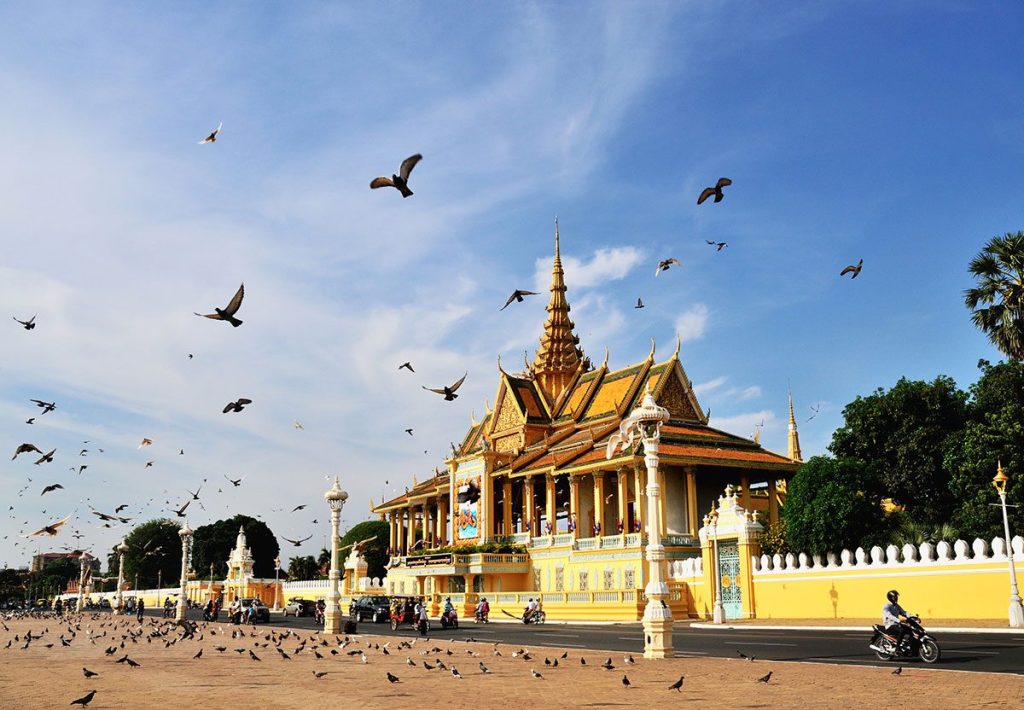
Admire the grandeur of the Chanchhaya Pavilion at the Royal Palace. Image source: Xuanlu Wang/Shutterstock.com
The Royal Palace, with its traditional Khmer roofs and ornate furnishings, is easily seen from everywhere in Phnom Penh. Close to the water, it is very similar to its Bangkok twin. Since 1860, when the capital city was relocated from Oudong, the palace has served as the peaceful residence of the royal family. The Silver Pagoda, the Khemarin Palace, the Throne Hall, and the Inner Court are the four primary buildings here. Popular tourist destinations in Phnom Penh, the Silver Pagoda and Throne Hall complexes are open to the public even though half of the complex is deemed the king’s palace and is thus off-limits.
3. Tuol Sleng Genocide Museum
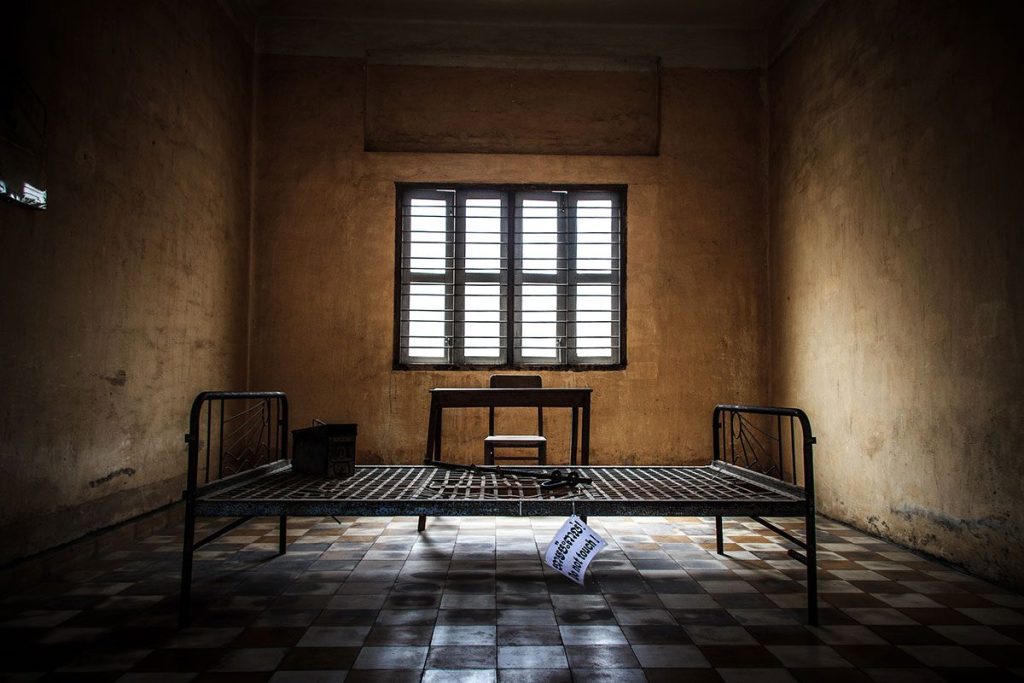
Pay tribute to the victims and honor their memory at the Tuol Sleng Genocide Museum. Image source: Alfons Taekema/Shutterstock.com
Once a high school, Tuol Sleng was transformed into Cambodia’s worst jail by the Khmer Rouge Regime in 1975. Although more than 17,000 prisoners were held at Tuol Sleng during its four years of operation, just a few are known to have survived. The jail was discovered by the Vietnamese army in 1979, and since then, Tuol Sleng has been transformed into a museum commemorating the atrocities committed there during the Khmer Rouge era. A visit to the museum is required for everyone with an interest in Cambodia’s horrific history.
2. Sisowath Quay
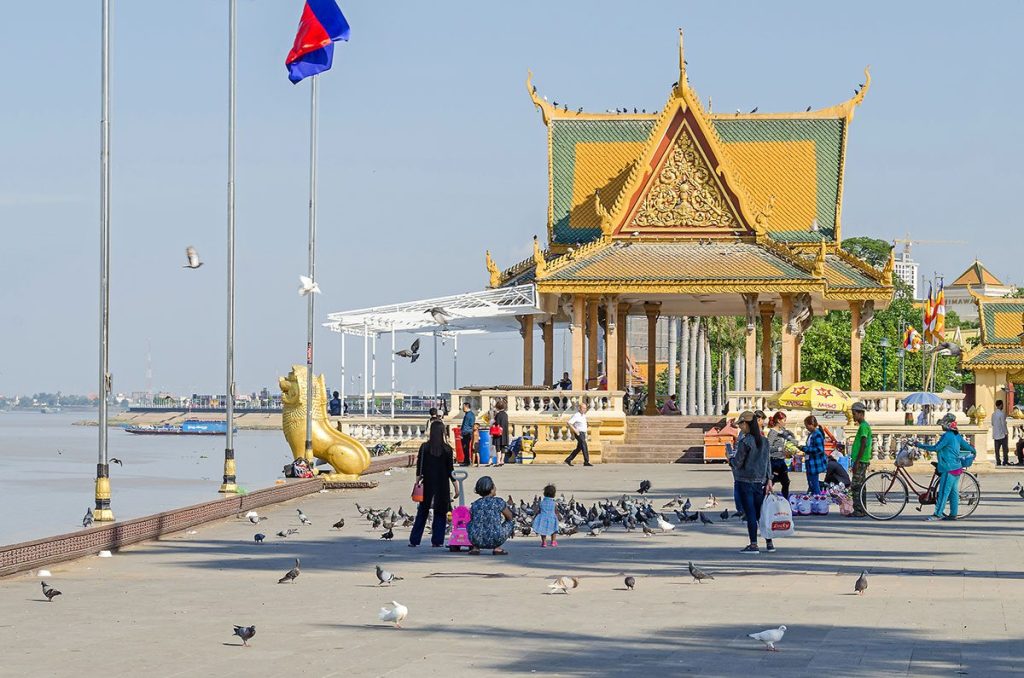
Take a leisurely stroll along the scenic Preah Sisowath Quay in Phnom Penh. Image source: laranik/Shutterstock.com
For hundreds of years, this stretch of riverfront has served as a vital public trade district. Along the riverbanks of the Mekong, close to the Royal Palace, you’ll find a vibrant marketplace as well as several hotels and restaurants. There are few better places to view the boat races that take place in mid-April to mark the Buddhist new year in Phnom Penh and the rest of Southeast Asia. Many western-style buildings and embassies can be seen along Sisowath Quay, giving the area a very international and western feel. Here is where you may get a ferry to Siem Reap.
1. Phsar Thmei (Central Market)
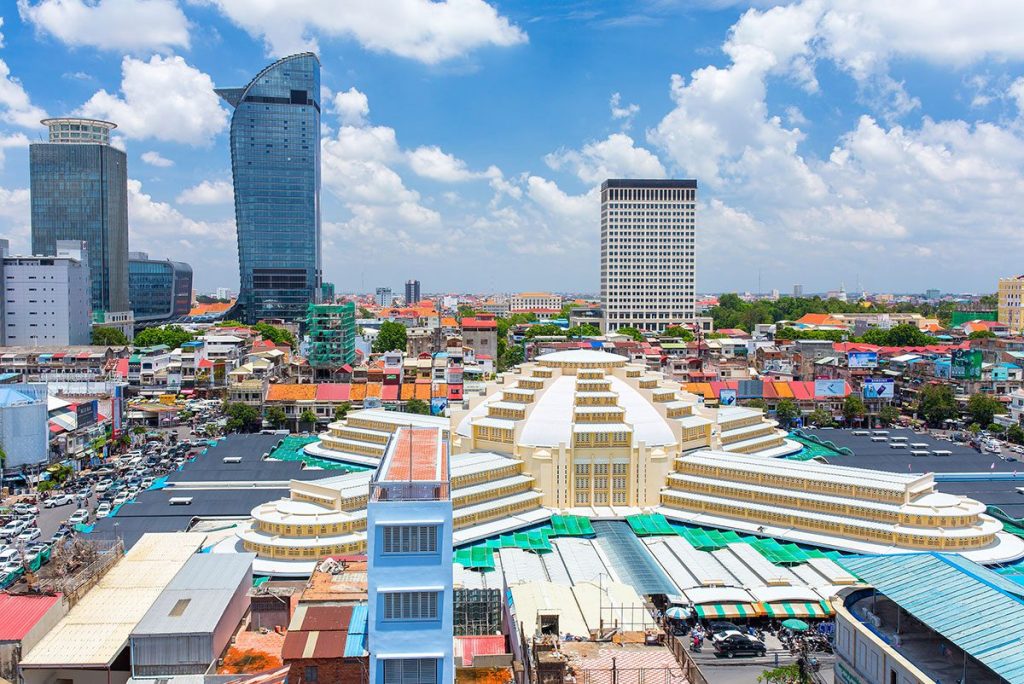
Dive into a world of colors and culture at Central Market Phsar Thmei. Image source: Mazur Travel/Shutterstock.com
Underneath a gleaming golden dome is a market with four pearl-white wings that are always bustling with shoppers and sellers. Even during wartime, this art-deco remnant of the French Colonial period has remained open to the public. Shoppers may get a good deal on just about everything at this store. You may find everything from burnt CDs and DVDs to cheap t-shirts, from opulent batik and brocade fabrics to gold and diamonds.



